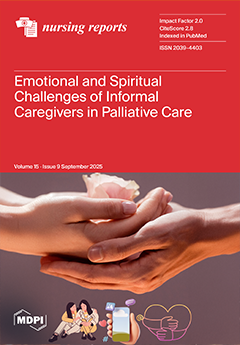Screening for diabetes-specific distress should be considered a standard component of diabetes management. This study aimed to evaluate the psychometric properties of the Serbian adaptation of the Problem Areas in Diabetes—Teen Version (PAID-T).
Methods: A multicentre, validation, cross-sectional study was conducted with 374 adolescents (aged 13–18 years) diagnosed with type 1 diabetes (T1D), all of whom completed the Serbian version of the PAID-T. The psychometric evaluation included assessments of construct validity through exploratory (EFA, first subsample,
n = 140) and confirmatory (CFA, second subsample,
n = 234) factor analyses, as well as examinations of concurrent and convergent validity. Reliability was evaluated using measures of internal consistency and test–retest stability (
n = 289).
Results: Factor analyses indicated some multidimensionality; however, the high correlations between factors in the three-factor model and the optimal fit of the hierarchical three-factor model with a single second-order factor supported the interpretation that the PAID-T measures a unified construct, with satisfactory fit indices (CFI = 0.95; TLI = 0.93; RMSEA = 0.08; SRMR = 0.05). Concurrent validity testing demonstrated gender-based differences in adolescents’ perceptions of the emotional burden of diabetes (W = 19.718,
p = 0.03, small effect size = 0.11). Convergent validity analyses showed that adolescents who were non-adherent to treatment (W = 11.390,
p = 0.01, small effect size = 0.13) or experienced difficulties managing diabetes at school (W = 16.333,
p < 0.001, small effect size = 0.16) reported significantly higher levels of diabetes-specific distress. A significant negative correlation was also observed between PAID-T scores and perceived social support (ρ = −0.24,
p < 0.001). Importantly, Serbian adolescents with T1D reported mean PAID-T scores close to the cutoff point of 44, indicating clinically relevant levels of distress. The Serbian version demonstrated strong internal consistency (Cronbach’s α = 0.92; McDonald’s ω = 0.93) and excellent test–retest reliability (ICC = 0.99, 95% CI), confirming stability over time.
Conclusions: The Serbian adaptation of the PAID-T demonstrated strong validity and reliability, supporting its use as a robust tool for assessing self-reported diabetes-specific distress in adolescents. Notably, the mean PAID-T scores in Serbian adolescents with T1D were close to the established cutoff point of 44, underscoring the clinical relevance of routine screening in this population. The early identification of diabetes distress can enable nurses and other members of the multidisciplinary healthcare team to deliver tailored interventions, ultimately improving psychological well-being and health outcomes.
Full article






